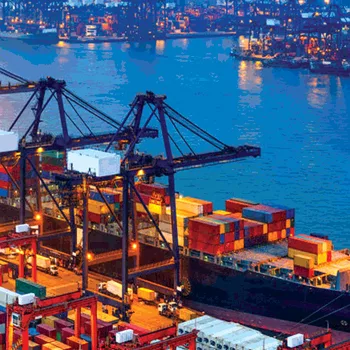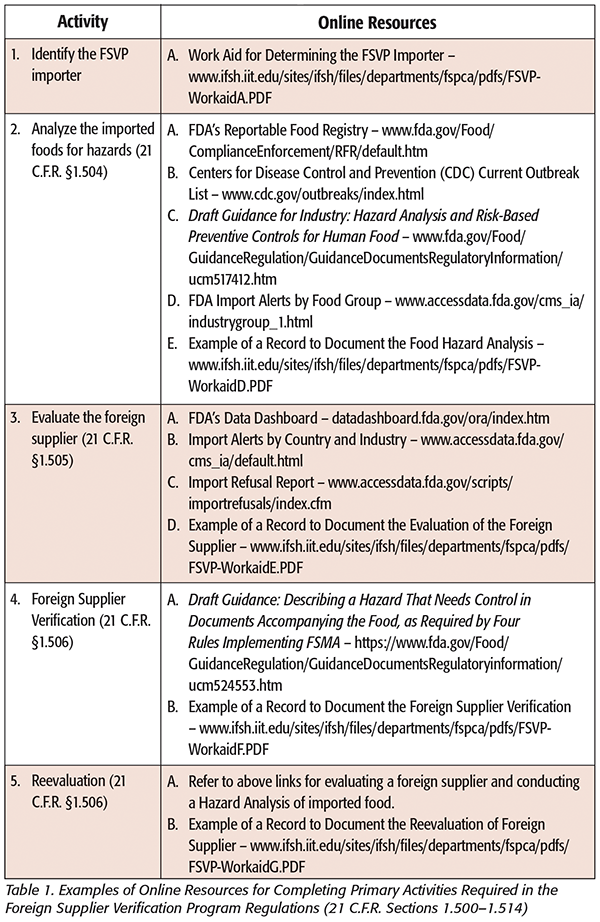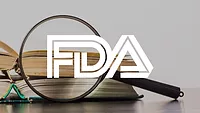Creating an FSVP to Fulfill the Regulations Promulgated from FSMA

As the U.S. population grows in ethnic diversity, the variety of imported foods expands correspondingly. The share of imports has trended up, going from 11 percent in 2009 to 14.8 percent in 2016.[1] From 1996 to 2014, 195 outbreak investigations implicated imported foods, resulting in 10,685 illnesses, 1,017 hospitalizations, and 19 deaths.[2] While the U.S. Food and Drug Administration (FDA) promulgated several rules to fulfill their new mandates from the Food Safety Modernization Act (FSMA), the Foreign Supplier Verification Program (FSVP) rule was created to address the food safety hazards posed by imported foods (see “Major Provisions of the FSVP Rule,”[3]).
The FSVP Final Rule was issued on November 27, 2015.[4] The resulting regulations require food importers to develop, maintain, and follow an FSVP. The FSVP is to provide adequate assurances that the foreign supplier uses processes and procedures that provide the same level of public health protection as those required under the preventive controls and produce safety provisions of FSMA.4 The result of an effective and properly implemented FSVP program will ensure the imported food is not adulterated.
The FSVP rule is codified as regulation in 21 C.F.R., Subpart L, Sections 1.500–1.514. These regulations define several activities that an importer is to take in evaluating a food and supplier for hazards and risks. The primary activities include: 1) determine who the FSVP importer is, 2) conduct a Hazard Analysis of the food being imported, 3) evaluate the foreign supplier, 4) identify and conduct verification activities on hazards requiring a preventive control, and 5) reevaluate food risks and the foreign supplier. FDA and the Food Safety Preventive Controls Alliance (FSPCA) have provided several online resources to help with these activities, some of which are noted in Table 1.
An Example FSVP at Work
The following example, and work aids available at www.ifsh.iit.edu/fspca/courses/foreign-supplier-verification-programs-fsvp, promise to help those responsible for conducting FSVP activities.
Determine the FSVP Importer
The importer is defined as the U.S. owner or consignee of an article of food that is being offered for import into the U.S. If there is no U.S. owner or consignee of an article of food at the time of entry, the importer is the U.S. agent or representative of the foreign owner or consignee at the time of entry. Table 1 provides a resource to aid in identifying who should be named as the FSVP importer on the entry filing.
When a food product under FDA oversight is offered for entry into the United States, the U.S. Customs and Border Protection Automated Commercial Environment system will prompt the filer to transmit an entity role code or affirmation of compliance code related to FSVP. The entity role code “FSV” indicates that the entry line is subject to the FSVP regulation and subject to FSVP enforcement.5
The filer will also enter the name of the FSVP importer, their email address, and their unique facility identifier, which is their DUNS number. Since the FSVP importer is responsible for conducting FSVP activities codified in 21 C.F.R. Sections 1.500–1.514, the importer should require the filer to provide notification each time they are identified on an entry filing. FDA will use the entry identification of the FSVP importer as the responsible party for follow-up to ensure compliance with FSVP requirements.
Hazard Analysis (Assessment) of Product
The product being imported into the United States must be assessed for all known or reasonably foreseeable hazards. A hazard is defined as any biological, chemical (including radiological), or physical agent that has the potential to cause illness or injury (21 C.F.R. 117.3). The Hazard Analysis must be conducted and documented by a Qualified Individual (QI) who has the capability, availability, training, experience, and/or education to carry out requirements of the FSVP rule. Resources are available online to assist with identifying known or reasonably foreseeable hazards. These resources are summarized in Table 1.
Once the known or reasonably foreseeable hazards have been identified and documented, the QI will assess each for severity and its likelihood to occur in the absence of appropriate controls. The FSVP rule provides that the hazard assessment must consider the effect of the following on the safety of the finished food [21 C.F.R. 1.504 (c)(3)]:
• Formulation of the food
• The condition of the establishment and equipment of a typical entity that manufactures/processes, grows, harvests, or raises the type of food
• Raw materials and other ingredients
• Transportation practices
• Harvesting, raising, manufacturing, processing, and packing procedures
• Packaging and labeling activities
• Storage and distribution
• Intended or reasonably foreseeable use
• Sanitation, including employee hygiene
• Any other relevant factors such as the weather-related nature of some hazards (e.g., natural toxins)
It may be acceptable for another entity, including the foreign supplier, to analyze the known or reasonably foreseeable hazards for the food to determine whether there are any hazards requiring a control [21 C.F.R. 1.504 (d)]. The following is to occur:
• Verify that the entity assigned a QI to conduct the Hazard Analysis.
• The importer’s QI shall review and assess the Hazard Analysis conducted by that entity.
• The importer’s QI shall document the review and assessment of the entity’s analysis.
If the assessment of known and reasonably foreseeable hazards in the food indicate no hazards are present that require a control:
• A hazard evaluation of the supplier for approval and verification is not required.
• Foreign supplier verification activities are not required, unless the food is a raw agricultural commodity that is a fruit or vegetable and considered “covered produce.”
If the assessment of known and reasonably foreseeable hazards in the food indicates that a hazard(s) requires a preventive control, a hazard evaluation of the supplier must be conducted.
Evaluation of a Foreign Supplier
The evaluation of a foreign supplier is to determine how the hazard(s) is being controlled and whether your supplier should be approved. A QI must evaluate the foreign supplier’s performance [21 C.F.R. 1.505 (a)], considering the Hazard Analysis and who is controlling the hazards. The foreign supplier’s performance may be evaluated by considering the following:
• The foreign supplier’s food safety practices (e.g., questionnaire, survey)
• The foreign supplier’s food safety history (e.g., testing, audits, responsiveness)
• Whether the supplier’s food and/or supplier have been found by FDA to be in violation of U.S. requirements (must also confirm the supplier’s facility is registered with FDA)
• Other factors (e.g., storage, transport) as appropriate
The supplier’s performance is to be documented on a designated worksheet. Resources for conducting a supplier evaluation are summarized in Table 1.
Verification of a Foreign Supplier
The purpose of a foreign supplier verification activity is to provide assurance that the hazards requiring a control in the food being imported are continuously being significantly minimized or prevented. The verification activity shall be conducted by the QI and documented on a designated worksheet.
The following are regarded as appropriate verification activities [21 C.F.R. 1.506(d)(1)]:
• On-site audits
• Sampling and testing of food
• Review of the foreign supplier’s relevant food safety records
When a hazard may result in “serious or adverse health consequence or death to humans or animals” (SAHCODHA) and is being controlled by the foreign supplier, an on-site audit of the foreign supplier should be considered as the appropriate verification before importing the food and at least annually thereafter [21 C.F.R. 1.506(d)(2)].
• When using an on-site audit as a verification activity:
• A qualified auditor shall have been used to conduct the supplier’s on-site audit.
• The audit must consider all FDA food safety standards to which the food is subject.
• A review of the supplier’s food safety plan and its implementation must be included.
If the importer conducts the on-site audit, additional criteria include:
• Audit documentation must be retained for each on-site audit to include:
• Audit procedures
• Qualification of the auditor
• Dates the audit was conducted
• The conclusion of the audit
• Any corrective actions taken in response to noted deficiencies
• Documentation must demonstrate that the supplier is using processes and procedures that control
SAHCODHA hazards.
When using sampling and testing as a verification activity:
• Documentation of each sampling and testing activity must be retained and include:
• Identification of the food tested and the number of samples
• The tests conducted (analytical methods) and the dates conducted
• The results of the tests and any corrective actions taken
• Documentation must be retained that identifies:
• The laboratory conducting the testing and its qualification
• That the testing was conducted by a QI
When using a review of supplier records as a verification activity (e.g., monitoring records of controls noted in the supplier’s food safety plan):
• Retain documentation of each review, including:
• The dates of the review and the nature of the records reviewed
• The conclusions of the review and any corrective actions taken in response to identified deficiencies
• Documentation that supports the review had been completed by a QI
In all verification activities, the entity or entities that are significantly minimizing or preventing the hazards must be identified, that is, determine who is controlling the hazard(s). The verification activity must also support that the hazards have been significantly minimized or prevented (e.g., the foreign supplier’s raw material supplier(s) has significantly minimized or prevented a hazard).
If a hazard will be controlled by a customer:
• Disclose in documents accompanying the food that the food is “not processed to control (insert identified hazard).”
• If the customer is subject to Preventive Controls (PC) rules, obtain annually written assurance of your customer’s procedure to significantly minimize or prevent the identified hazard.
• If the customer is not subject to PC rules, obtain annually written assurance that the customer is manufacturing, processing, or preparing the food in accordance with applicable food safety requirements.
If the customer is not controlling the hazard, but another entity further down the distribution chain is controlling the hazard:
• Comply with the disclosure and assurances.
• Only sell the food to another entity that agrees in writing that it will either
• Control the identified hazard, or
• Obtain a written assurance from its customer that the customer will make a similar disclosure and obtain assurances. Written assurances must include the effective date, printed names and signatures of authorized company officials, and the required assurances.
An evaluation of a foreign supplier and performance of verification activities are not required if:
• A system that ensures control of a hazard in the food at a subsequent distribution step has been established and implemented, and
• The implementation of that system is documented.
Reevaluation of Foreign Supplier Performance and Food Risk
Evaluations on the food and supplier will be promptly reviewed whenever new information becomes available that may affect prior evaluations. At a minimum, the food risk and foreign supplier performance must be reevaluated every 3 years. In performing the reevaluation, the previously identified factors relating to the foreign supplier and food are considered. Appropriate corrective actions are to be taken in response to the reevaluation, if necessary.
When considering new information, determine whether the supplier verification activity needs changed or whether to continue importing food from the foreign supplier. All reevaluations and corrective actions must be conducted by a QI and documented.
Approval
The importer must approve their foreign suppliers on the basis of the evaluation of applicable FDA food safety regulations and information relevant to the foreign supplier’s compliance with those regulations [21 C.F.R. Section 1.512 (c)(1)(i) or (c)(1)(iii)]. The importer will import foods only from suppliers or nonapproved suppliers, when necessary and on a temporary basis, whose foods are subjected to adequate verification activities before being imported.
FSVP Records
The following activities are to be documented on designated records to show the proper implementation of the FSVP:
• Hazard Analysis of the food
• Foreign supplier evaluation
• Foreign supplier approval
• Determination of verification method and frequency
• Performance of verification activity
• Any necessary corrective actions
• Reevaluations of the FSVP either for cause or routinely every 3 years
Records shall be kept for a minimum of 2 years after the last use of the supplier, process, or procedure. Records must be made available to FDA for review upon request for inspection and copying. The records, once obtained by FDA, may be subject to Freedom of Information Act requests.
Conclusions
It will take time to determine the effect of FSMA regulations on the safety of the U.S. food supply. Even so, we may not fully know the effect of each of the individual FSMA rules. The Regulatory Impact Analyses for FSMA rules will consider and analyze the reduction in the number of illnesses and deaths following implementation of the FSMA regulations. The impact of each individual FSMA regulation will not be readily determinable because sufficient data do not exist to determine the effect one regulation has on public health as compared with another. Therefore, FDA will account for the public health benefits of the FSVP regulation in the Preventive Controls, Produce Safety, and other applicable food safety regulations.3
Hank Cotney, M.Sc., is the director of Quality Assurance at Perdue Agribusiness.
References
1. www.ers.usda.gov/topics/international-markets-us-trade/us-agricultural-trade/.
2. Gould, L, et al. 2017. “Outbreaks of Disease Associated with Food Imported into the United States, 1996–2014.” Emerg Infect Dis 23(3):525–528.
3. www.govinfo.gov/content/pkg/FR-2015-11-27/pdf/2015-28158.pdf.
4. U.S. Food and Drug Administration. 2015. “Foreign Supplier Verification Programs for Importers of Food for Humans and Animals,” 80 Fed Reg 74226.
5. U.S. Food and Drug Administration. January 2018. Foreign Supplier Verification Programs for Importers of Food for Humans and Animals: Guidance for Industry, Draft Guidance, 74.
Looking for quick answers on food safety topics?
Try Ask FSM, our new smart AI search tool.
Ask FSM →








